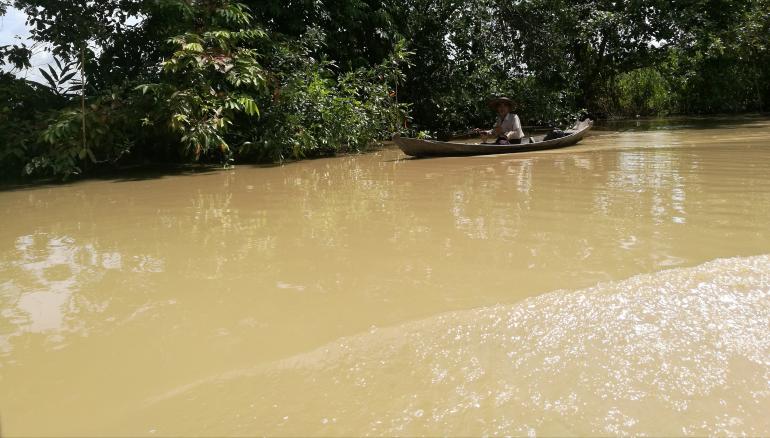The middle part of the country undergo shortages of water in summer season every year

Myanmar and Water
Myanmar is one of the ASEAN member countries located in South East Asia. The distance of 2200 km is lengthening from the North to the South and 950 km from the East to the West.
The country has its borders with five neighboring countries; Bangladesh, India, Laos, Thailand and China. The country has a very long coastal line of about 2234 km along the Bay of Bengal and the Andaman Sea.
Myanmar is a country endowed with rich natural resources cultivable land, available water resources and favorable climate. The country is, like some other countries in the world, a forest - clad mountainous country, with plateaus, valleys and plains.
The total land area of Myanmar is about 261,200 sq. mile (67.65 million hectares) according to 2003-2004 status.
The population of Myanmar is currently 54,296,150 as of Monday, March 9, 2020, based on Worldometer elaboration of the latest United Nations data.
It is also a country that is rich in water resources. The catchment area of Myanmar's ten principal river basins is about 737800 km². Potential water resources volume comprises about 1082 km³ for surface water and 495 cubic km for groundwater as well compose national water resources annually.
As an agro-base country of Myanmar, water utilization for agricultural sector is for 90% while industry and domestic use is only about 10% of the total water use. The total utilization of the nation's water resources is only about 5 percent of the potential.
Although Myanmar is a water rich country, the country is still facing challenges for water safety, said U Henry Van Thio, Vice President, Chairperson of National Water Resources Committee (NWRC), during the World Water Day 2019 ceremony held in Nay Pyi Taw.
U Henry Van Thio said, “Myanmar had abundant water resources, holding 16pc of water resources among the 10 ASEAN countries and 12pc in all of Asia. Nevertheless, with diversity in rainfall, the increase in population and population density, the rise of industrial zones and economic zones and other changes to social systems means there would be a rapid increase in demands for water supply and new challenges for providing adequate water to every person.”
He added “Basic requirements such as access to safe drinking water and water for sanitation and waste treatment were still an issue in many parts of the country.”
In addition, as wastewater and chemicals were disposed of in rivers and creeks without proper treatment, there were water pollution problems. To solve those issues, the country needed to systematically realize comprehensive water-resource management.
The Myanmar government has been materializing measures, such as infrastructure development, to store more water and sufficiently use water. Also, education campaigns to help the public understand the importance of water and its conservation were required.
“The imparting of knowledge and technology, consultation and partnership must be promoted among water users,” U Henry Van Thio said.
Villages in Sagaing, Mandalay and Magwe regions in the middle part of the country undergo shortages of water in summer season every year. Despite efforts by the government to address the issue, water shortages are still a major challenge in the drier territories of Myanmar.
By Raymond Kyaw Aung
Sources
http://www.wepa-db.net/policies/state/myanmar/myanmar.htm
https://www.mmtimes.com/news/safe-drinking-water-key-countrys-growth.html
https://www.mmtimes.com/news/water-supplies-still-issue-myanmar.html
https://www.worldometers.info/world-population/myanmar-population/
Radio Veritas Asia (RVA), a media platform of the Catholic Church, aims to share Christ. RVA started in 1969 as a continental Catholic radio station to serve Asian countries in their respective local language, thus earning the tag “the Voice of Asian Christianity.” Responding to the emerging context, RVA embraced media platforms to connect with the global Asian audience via its 21 language websites and various social media platforms.











